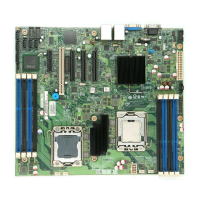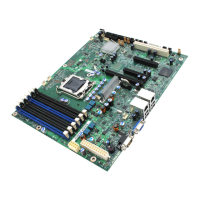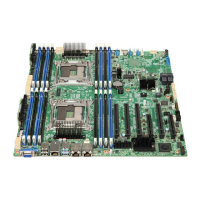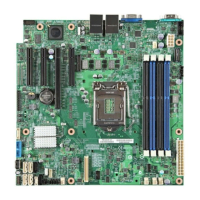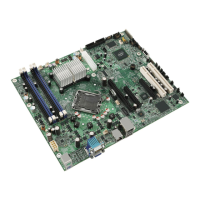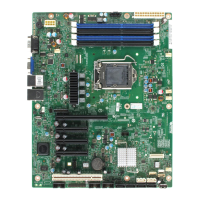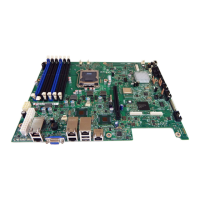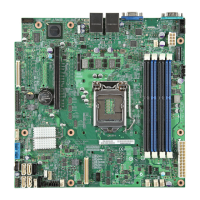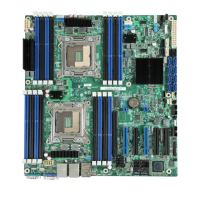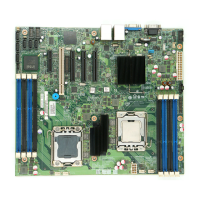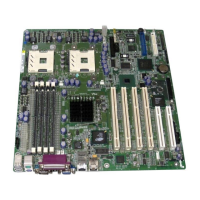Intel® 5000 Series Chipsets Server Board Family Datasheet System BIOS
Revision 1.1
Intel order number D38960-004
57
3.4.2.4 Performance Mode (Default)
With the platform running in Performance mode (Default), several platform control algorithm
variables are set to enhance the platform’s capability of operating at maximum performance
targets for the given system. In doing so, the platform is programmed with higher fan speeds at
lower external temperatures. This will result in a louder acoustic level than is targeted for the
given platform, but the increased airflow of this operating mode will greatly reduce possible
memory throttling from occurring and will reduce dynamic fan speed changes based on
processor utilization.
3.4.2.5 Acoustics Mode
With the platform running in Acoustics mode, several platform control algorithm variables are set
to ensure acoustic targets are not exceeded for specified Intel platforms. In this mode, the
platform is programmed to set the fans at lower speeds when the processor does not require
additional cooling due to high utilization / power consumption. Memory throttling will be utilized
to ensure that the memory thermal limits are not exceeded.
3.5 Flash ROM
The BIOS supports the Intel
®
28F320C3 flash part. The flash part is a 4 MB flash ROM, 2 MB of
which is programmable. The flash ROM contains system initialization routines, setup utility, and
runtime support routines. The exact layout is subject to change, as determined by Intel. A 128
KB block is available for storing OEM code (user binary) and custom logos.
3.6 BIOS User Interface
3.6.1 Logo / Diagnostic Screen
The Logo / Diagnostic screen may be in one of two forms. If Display Logo is enabled in the
BIOS Setup utility, a logo splash screen is displayed. By default Display Logo is enabled in
BIOS Setup. If the logo is displayed during POST, pressing <Esc> will hide the logo and display
the diagnostic screen.
If no logo is present in the flash ROM, or if Display Logo is disabled in the system configuration,
the summary and diagnostic screen is displayed.
The diagnostic screen consists of the following information:
BIOS ID. See Section 53.1
System name
Total memory detected (the total size of all installed FBDIMMs)
Processor information (Intel branded string, speed, and number of physical processors
identified)
Flash bank from which the system is booted
Types of keyboards detected if plugged in (PS/2* and/or USB)
Types of mouse devices detected if plugged in (PS/2 and/or USB)

